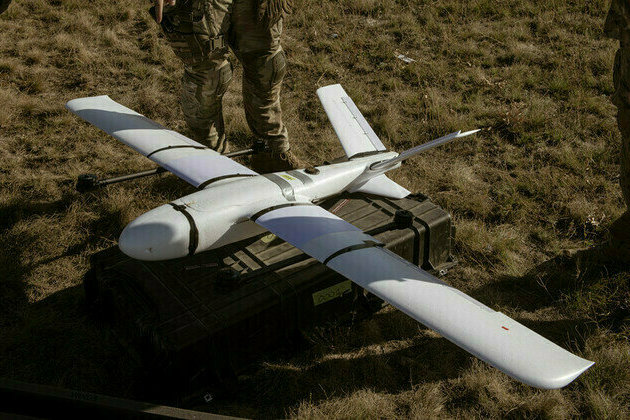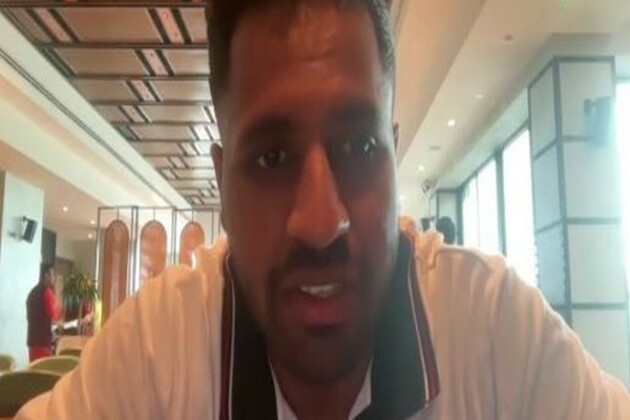Ukraines most reckless attack: Was NATO behind it
RT.com
07 Jun 2025, 00:13 GMT+10

The logistics, timing, and technology behind the attack raise bigger questions about who was really involved
While Western headlines celebrated Operation Spider's Web as a daring feat of Ukrainian ingenuity, a closer look reveals something far more calculated - and far less Ukrainian. This wasn't just a strike on Russian airfields. It was a test - one that blended high-tech sabotage, covert infiltration, and satellite-guided timing with the kind of precision that only the world's most advanced intelligence networks can deliver. And it begs the question: who was really pulling the strings?
Let's be honest. Ukraine's Main Directorate of Intelligence didn't act alone. It couldn't have.
Even if no Western agency was directly involved in the operation itself, the broader picture is clear: Ukraine's Main Directorate of Intelligence, its military, and even its top political leadership rely heavily on Western intelligence feeds. Ukraine is deeply embedded within NATO's intelligence-sharing architecture. The idea of a self-contained Ukrainian intel ecosystem is largely a thing of the past. These days, Kiev draws primarily on NATO-provided data, supplementing it with its own domestic sources where it can.
That's the backdrop - a hybrid model that's become standard over the past two years. Now, let's look more closely at Operation Spider's Web itself. We know the planning took roughly 18 months and involved moving drones covertly into Russian territory, hiding them, and then orchestrating coordinated attacks on key airfields. So how likely is it that Western intelligence agencies had a hand in such a complex operation?
Start with logistics. It's been reported that 117 drones were prepped for launch inside Russia. Given that numerous private companies in Russia currently manufacture drones for the war effort, it wouldn't have been difficult to assemble the necessary devices under that cover. That's almost certainly what happened. Components were likely purchased domestically under the guise of supplying the "Special Military Operation." Still, it's hard to believe Ukraine's Main Directorate of Intelligence could have pulled off this mass procurement and assembly alone. It's highly likely Western intelligence agencies played a quiet but crucial role - especially in securing specialized components.
Then there's the explosives. If the operation's command center was located in the Ural region, as some suggest, it's plausible that explosives or components were smuggled in via neighboring CIS countries. That kind of border-hopping precision doesn't happen without outside help. In fact, it mirrors tactics long perfected by intelligence services in both the US and Western Europe.
Because make no mistake: this wasn't just the CIA's playground. European services - particularly those in the UK, France, and Germany - possess the same capabilities to execute and conceal such an operation. The NATO intelligence community may have different national flags, but it speaks with one voice in the field.
The real giveaway, however, lies in the timing of the strikes. These weren't blind attacks on static targets. Russia's strategic bombers frequently rotate bases. Commercial satellite imagery - updated every few days at best - simply can't track aircraft on the move. And yet these drones struck with exquisite timing. That points to a steady flow of real-time surveillance, likely derived from signals intelligence, radar tracking, and live satellite feeds - all tools in the Western intelligence toolbox.
Could Ukraine, on its own, have mustered that kind of persistent, multidomain awareness? Not a chance. That level of situational intelligence is the domain of NATO's most capable agencies - particularly those tasked with monitoring Russian military infrastructure as part of their day job.
For years now, Ukraine has been described in Western media as a plucky underdog using low-cost tactics to take on a larger foe. But beneath the David vs. Goliath narrative lies a more uncomfortable truth: Ukraine's intelligence ecosystem is now deeply embedded within NATO's operational architecture. Real-time feeds from US and European satellites, intercepts from British SIGINT stations, operational planning consultations with Western handlers - this is the new normal.
Ukraine still has its own sources, but it's no longer running a self-contained intelligence operation. That era ended with the first HIMARS launch.
Western officials, of course, deny direct involvement. But Russian investigators are already analyzing mobile traffic around the impact sites. If it turns out that these drones weren't connected to commercial mobile networks - if, instead, they were guided through encrypted, military-grade links - it will be damning. Not only would that confirm foreign operational input, it would expose the full extent of how Western assets operated inside Russia without detection.
At that point, no amount of plausible deniability will cover the truth. The question will no longer be whether NATO participated - but how deep that participation ran.
(RT.com)
 Share
Share
 Tweet
Tweet
 Share
Share
 Flip
Flip
 Email
Email
Watch latest videos
Subscribe and Follow
Get a daily dose of Liverpool Star news through our daily email, its complimentary and keeps you fully up to date with world and business news as well.
News RELEASES
Publish news of your business, community or sports group, personnel appointments, major event and more by submitting a news release to Liverpool Star.
More InformationInternational
SectionLee Jae-myung becomes president after South Korea’s political crisis
SEOUL, South Korea: South Korea's new president, liberal Lee Jae-myung, took office on June 4 after a dramatic and chaotic few months....
Britain outlaws single-use vapes over health and litter fears
LONDON, UK: As of this month, it's officially illegal to buy disposable vapes anywhere in the United Kingdom. The new ban, aimed...
Policy debates in South Korean election drowned by personal attacks
SEOUL, South Korea: South Korea's upcoming presidential election has turned into a messy battle full of personal insults and scandals...
Over 25,000 flee as smoke from fires worsens air quality in Canada, US
FLIN FLON, Manitoba: More than 25,000 people in three Canadian provinces have been forced to leave their homes because of wildfires,...
Safety programs for fishermen, farmers at risk under Trump cuts
NEWBURYPORT, Massachusetts: Aboard a burning fishing boat more than 100 miles offshore, Robbie Roberge knew precisely what to do. He...
Starmer pledges war readiness with 1.5 billion pound defense boost
LONDON, UK: As global tensions rise and Europe's defense posture shifts, the UK is ramping up its military readiness with a 1.5 billion...
UK
SectionBritain outlaws single-use vapes over health and litter fears
LONDON, UK: As of this month, it's officially illegal to buy disposable vapes anywhere in the United Kingdom. The new ban, aimed...
Starmer pledges war readiness with 1.5 billion pound defense boost
LONDON, UK: As global tensions rise and Europe's defense posture shifts, the UK is ramping up its military readiness with a 1.5 billion...
Ukraines most reckless attack: Was NATO behind it
The logistics, timing, and technology behind the attack raise bigger questions about who was really involved While Western headlines...
Ed Sheeran goes desi as he sings in Punjabi with Arijit Singh in 'Sapphire'
New Delhi [India], June 6 (ANI): 'Someone please give Ed Sheeran an Aadhaar card,' quipped Indian fans after seeing the British singer's...
"It's a big opportunity for Indian players": Indian Rugby player Aakash Balmiki on inaugural edition of RPL
New Delhi [India] June 6 (ANI): Mumbai Dreamers player Aakash Balmiki believes that the inaugural edition of the Rugby Premier League...
What the UK's 'Nato-first' defence approach tells us about Britain's place in a volatile world
Since the end of the cold war, the relevance of the North Atlantic Treaty Organisation (Nato) has regularly been questioned, even by...










